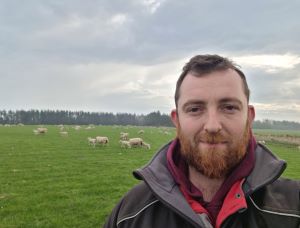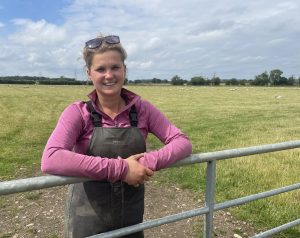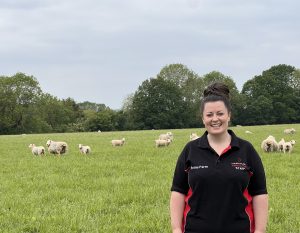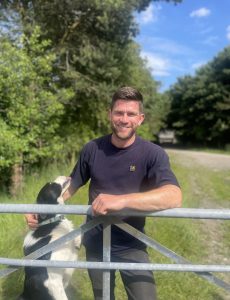with thanks to Ben Smith (Shepherd) from James Brown & Co, Middle Moneynut Farm.
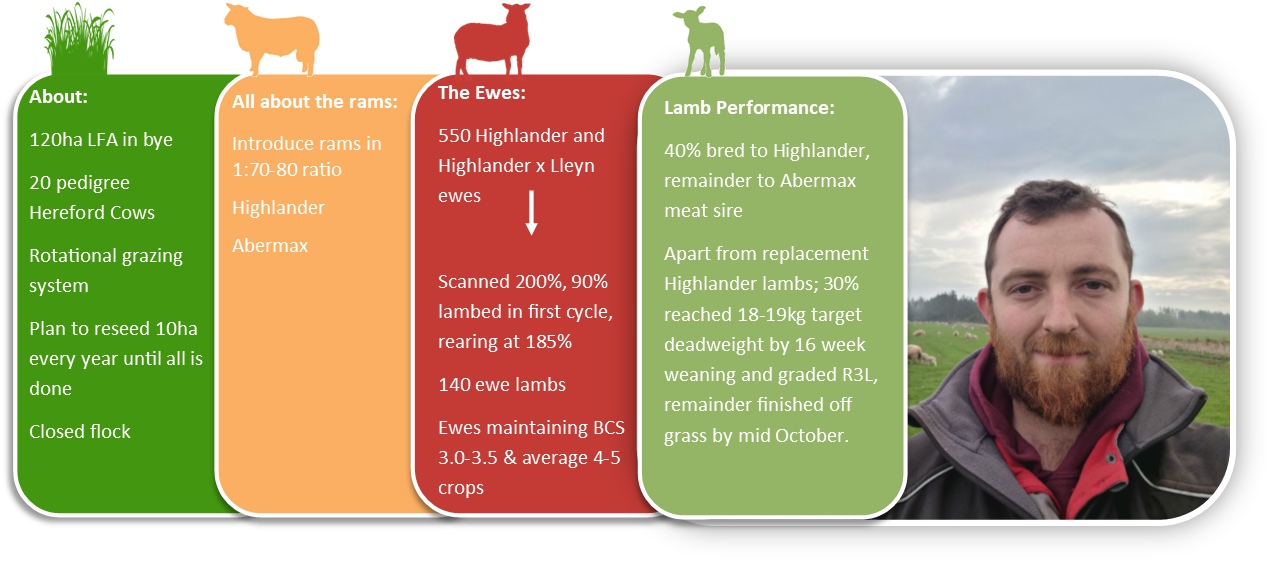 Sheep producers seeking a profitable low input, high output system without payments can have it all, says Ben Smith who has first-hand proof after working with Highlander ewes for the last 10 years on a Borders based unit. “Our objective is to develop a system that is completely sustainable and profitable without any support payments, and despite this unit undergoing a complete rejuvenation programme, we’re not far off.
Sheep producers seeking a profitable low input, high output system without payments can have it all, says Ben Smith who has first-hand proof after working with Highlander ewes for the last 10 years on a Borders based unit. “Our objective is to develop a system that is completely sustainable and profitable without any support payments, and despite this unit undergoing a complete rejuvenation programme, we’re not far off.
“Last year our closed flock of 550 Highlander and Highlander Lleyn ewes scanned 200%, we introduced a ration of 70 to 80 ewes to one ram, fertility was also reflected in the fact 90% lambed within the first cycle, and all outdoors from early April with minimal intervention. Rearing stood at 185%. 40% were bred to the Highlander and the remainder to the Abermax meat sire and apart from the replacement Highlander lambs; 30% of the crop had reached 18-19kg target deadweight by 16-week weaning and graded R3L, while the remainder finished solely off grass by mid-October.
“Highlanders are bred and reared to graze, they convert grass and other forage crops well. We achieved our target of 447kg lamb/ha,” he explains. “Ewes are maintaining themselves in BCS 3.0 to 3.5 throughout the season solely from forage and we expect them to average four to five crops.
Add together the performance benefits and they’re also contributing towards reduced emissions.”
Ben manages North Fallaknowe, based near Coldingham which was secured by the Morrison family three years ago. After shepherding Highlanders on a nearby unit for a decade, he was introduced to start a new flock from scratch on the LFA unit. “Highlander and Highlander Lleyn ewes were the natural choice to buy in, and since they are proving to be profitable here without support payments, then we’re gradually building a closed pure Highlander flock to 750 ewes with our own replacements.”
Highlanders are providing the entire package, he says. “Ewes are maturing at 70kg to 75kg body weight, so they’re also proving to more efficient, they cost less to keep than some traditional breeds and we can stock more heavily. For example, we’re stocking 20 ewes and lambs per ha on our rotational grazing system, so we’re always keeping fresh growth ahead of them. It just so happens all our fields are less than 8ha, however we’re planning to split to 4ha to speed up the rotation and improve overall efficiency.”
While a 200% plus scan with 90% of the flock lambing outdoors within 17 days may seem daunting to some producers, Ben says he can manage the entire job himself which amounts to checking the ewes three to four times a day.
“I’ve never had a ewe with insufficient milk, the Highlanders have terrific motherability and they keep their lambs with them. The triplets seem to always even up with the singles and I’ve never had a ewe refuse a foster lamb.”
Amongst Ben’s future plans are to breed from ewe lambs; they’re reaching 60% to 70% of their adult mature weight by tupping at 10 months consequently this has potential to further improve flock efficiency.
“This year we’re also trialing the breed at Middle Moneynut, the Morrison family’s hill unit near Cockburnspath carrying 1,100 Blackface ewes. We’ve bred 100 Blackface ewes to the Highlander with a view to the replacing the traditional Greyface with a smaller, hardier and more prolific ewe.”
North Fallaknowe’s rejuvenation programme started off by putting through the ploughing through heavy clay soils to relieve compaction. For the first two years we’ve drilled 20ha of barley as an entry for a grass reseeds mixed with herbal leys. We plan to continue 10ha every year until we’re done, apart from 12ha in a mosaic wetland habitat. Introducing lucerne to make into silage is also on the cards. “We essentially want to achieve a mineral balance which in turn should improve soil fertility and enhance grazing potential,” he says.
